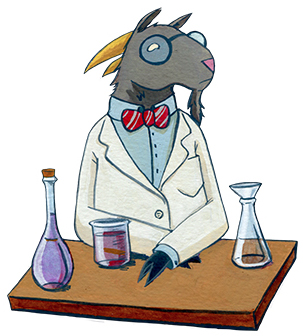Perspectives on "Twelfth Night"
From Londonhua WIKI
Perspectives on "Twelfth Night"
by Mary Hatfalvi & Justine Roy
 Your Project Page Picture Caption |
Contents
Abstract
This project explores various performances of Shakespeare's "Twelfth Night" and how they were received by viewers and critics. The goal is to gain a better understanding of the relationship between "Twelfth Night" and how people perceive the show over time. Our previous experience includes courses on Shakespeare, theater technology, and photography. This milestone serves as our culminating capstone project towards our theater humanities depths.
Introduction
I suggest you save this section for last. Describe the essence of this project. Cover what the project is and who cares in the first two sentences. Then cover what others have done like it, how your project is different. Discuss the extent to which your strategy for completing this project was new to you, or an extension of previous HUA experiences.
As you continue to think about your project milestones, reread the "Goals" narrative on defining project milestones from the HU2900 syllabus. Remember: the idea is to have equip your milestone with a really solid background and then some sort of "thing that you do". You'll need to add in some narrative to describe why you did the "thing that you did", which you'd probably want to do anyway. You can make it easy for your advisors to give you a high grade by ensuring that your project milestone work reflects careful, considerate, and comprehensive thought and effort in terms of your background review, and insightful, cumulative, and methodical approaches toward the creative components of your project milestone deliverables.
Section 1: Background
Summary
"Twelfth Night" is a romantic comedy by Shakespeare. After their ship is destroyed by a storm, twins, Viola and Sebastian, are individually rescued and each assume the other drowned. Viola hears of Olivia, the lady whom the Count Orsino is courting. Viola decides that she wants to meet Olivia who also is suffering from the death of her own brother. To do so she devises the plan of serving Orsino disguised as a boy and calling herself Cesario. Orsino has her pursuing Olivia for him as a messenger. Olivia falls in love with Cesario while Viola falls in love with Orsino. Meanwhile, Sebastian decides to go to Count Orsino unaware that his sister is alive. Upon arriving in the city, Sebastian is mistaken by Olivia for Cesario and she promptly marries him. Orsino finds out and, thinking that Sebastian is Cesario, gets extremely upset that his servant acted so wrongly against him. It is not until Viola and Sebastian end up in the same room that the siblings discover the other is alive and disguise of Cesario is abandoned. Olivia ends up happily married to Sebastian while Orsino and Viola become engaged.
Inspiration
explore the conditions that inspired Shakespeare
National Theater
The National Theater's performance of "Twelfth Night" was playful but still grounded in realism. The setting spanned multiple time periods. While the costumes were largely modernized, older elements were brought in. For example, the maids' dresses were of a modern style but had ruffs on them. In the beginning the actors drove out in antique cars indicating yet another time period in the late twentieth century. The interior decorating of Olivia's house was modern. This blending of time periods is consistent with the idea that Shakespeare's plays are considered timeless. The National Theater took several creative liberties with the play. The gender of Fabian, Malvolio and the clown were all switched from male to female. This introduced new relationship dynamics as Malvolia was lesbian unlike Malvolio. Another surprising element introduced was Count Orsino boxing. It is another example of a modern activity being introduced to the show. The casting featured a relatively young cast with all the leads in what appeared to be roughly in their 20s or 30s. Overall, the show appeared to be quite faithful to the original script with only minor alterations being made to adjust for the different genders of characters.
Reviews
look at how this interpretation was received by the public and scholars and why
The Globe
The Globe's performance of "Twelfth Night" had the feel of a spoof in the style of Mel Brooks. The performance was goofy and the performers maintained character though they did not present convincingly realistic people. Instead, the characters were dramatized and occasionally broke the fourth wall. One of the most notable changes made was the introduction of a musical aspect to the show. While the clown sings on occasion in the original script, all of the characters were singing on multiple occasions during the show. This resulted in significant modifications to the script as some lines were removed and some converted into lyrics. Many other lines, however, remained untouched. The show appeared to be set in Scotland in the late 1970s as several of the characters wore kilts and many of the other costumes drew on fashion from that time period such as jumpsuits with bell bottoms. In addition, several songs from that time period were referenced including "We are Family" and "I Will Survive". The casting for the show was older than for the National Theater's performance and appeared to have a decent sized age gap between Olivia and both Orsino and Olivia. In addition, the clown did not have as clear of a role. While the clown in the National Theater's performance had a significant role in the antics and in revealing themes, the clown in this performance was not well defined. He primarily just led the characters in song. Without knowing the play the character of the clown would quite possibly be very confusing.
Reviews
look at how this interpretation was received by the public and scholars and why
Twentieth Century Performance
describe another past interpretation of the show from the twentieth century
Reviews
look at how this interpretation was received by the public and scholars and why
Original Performance
how the show was performed in Shakespeare's time
Reviews
how did the people receive this show
Section 2: Deliverable
here we describe our own interpretation of a scene and how we would have it performed
Gallery
Conclusion
In this section, provide a summary or recap of your work, as well as potential areas of further inquiry (for yourself, future students, or other researchers).
References
Attribution of Work
For milestones completed collaboratively, add a section here detailing the division of labor and work completed as part of this milestone. All collaborators may link to this single milestone article instead of creating duplicate pages. This section is not necessary for milestones completed by a single individual.
External Links
If appropriate, add an external links section
Image Gallery
If appropriate, add an image gallery


